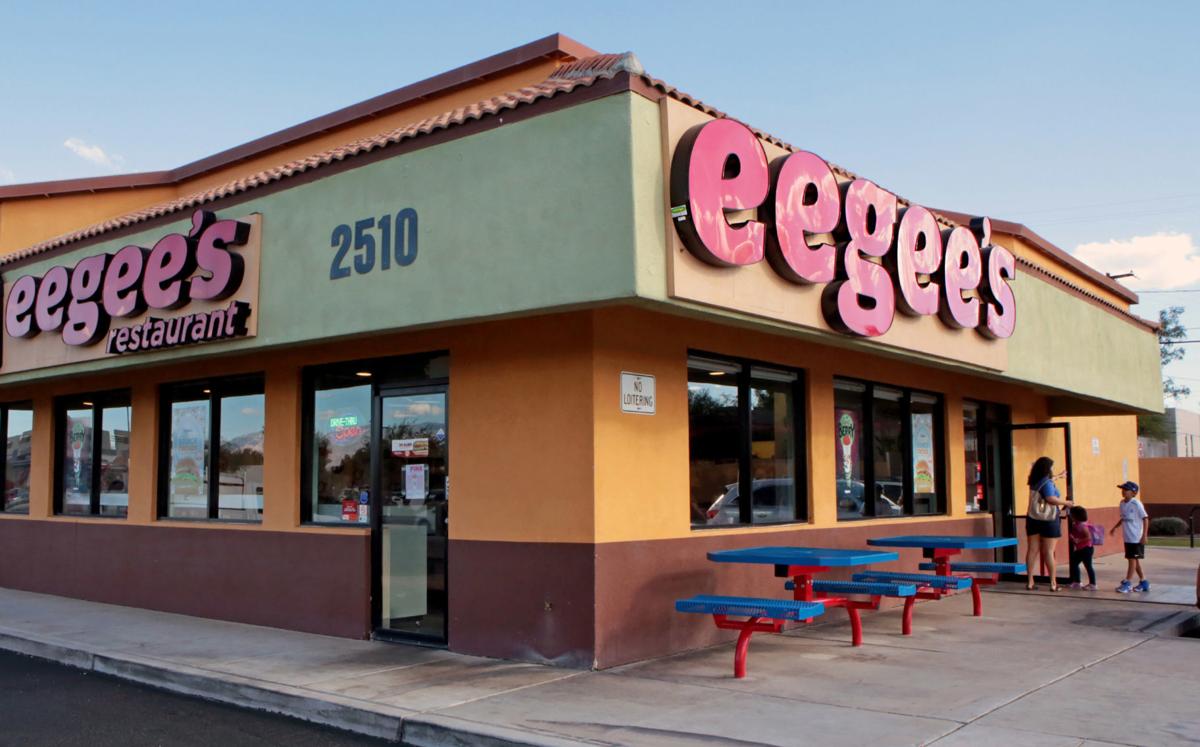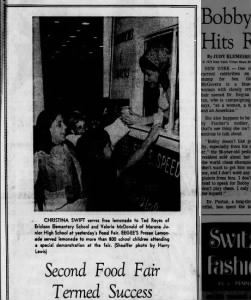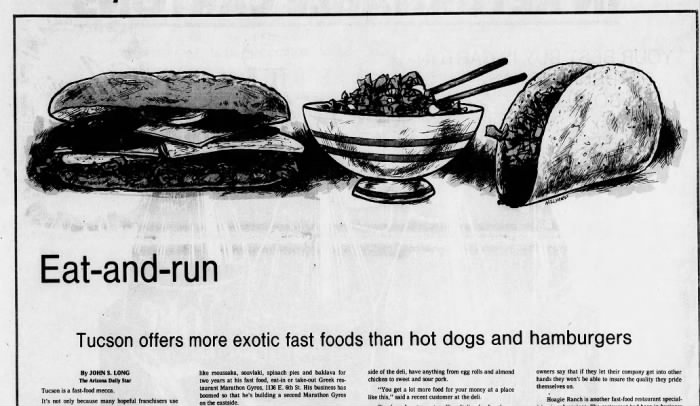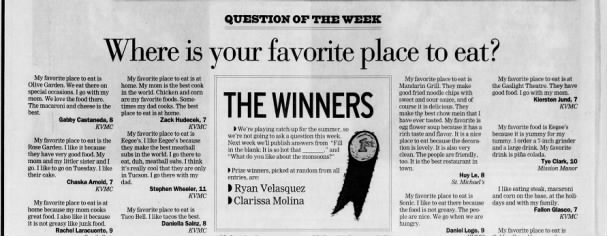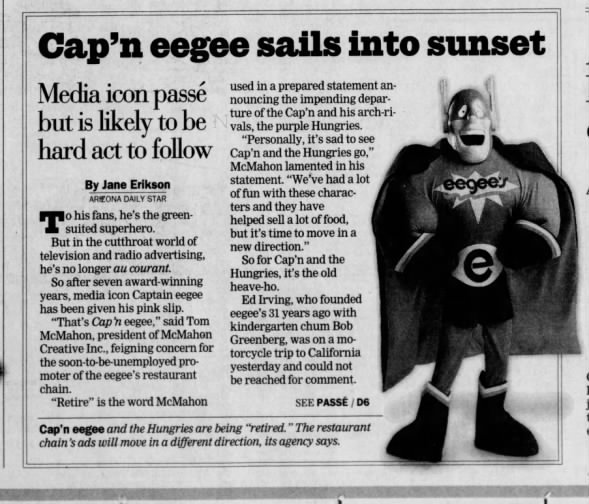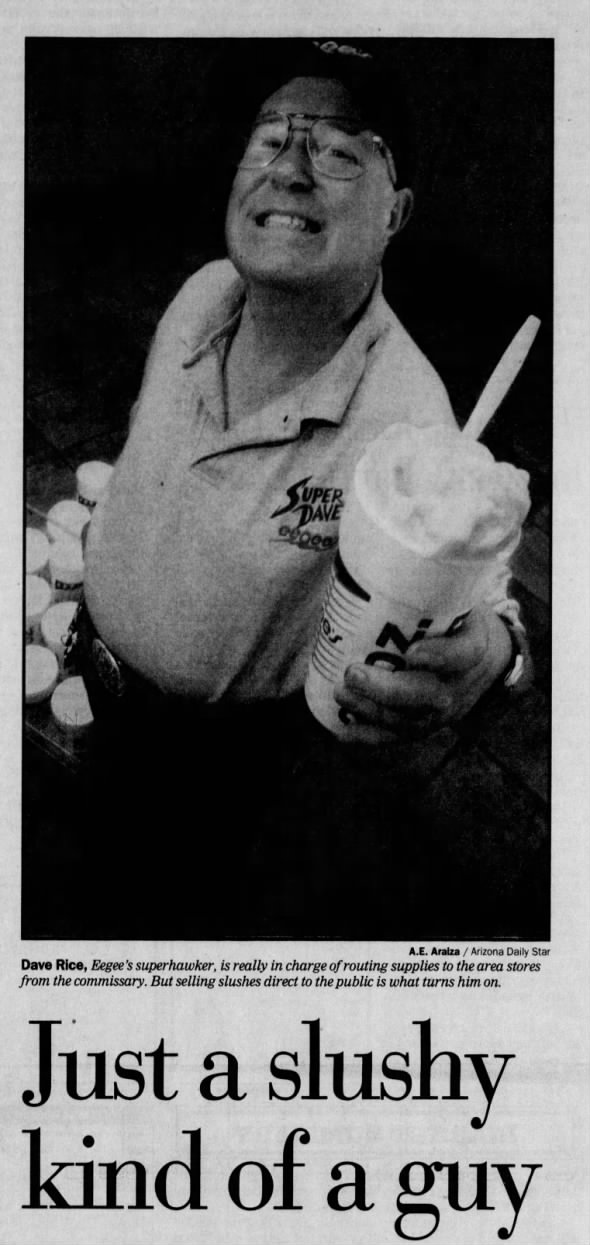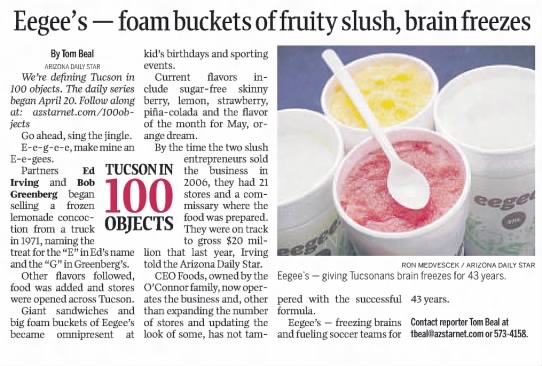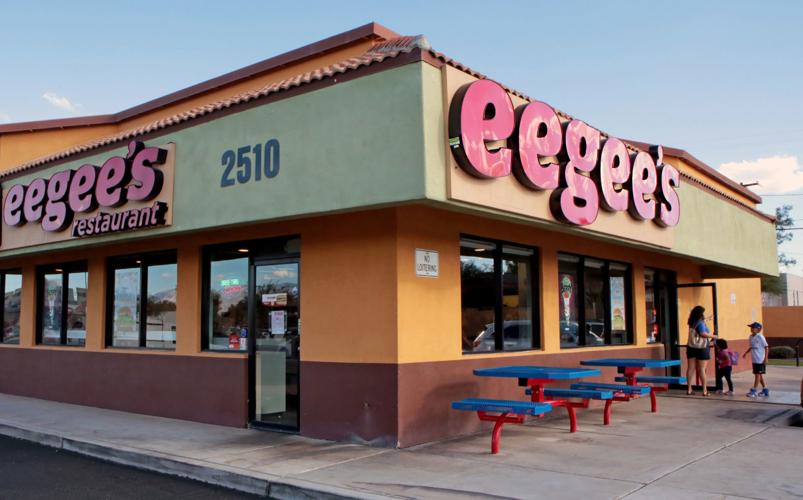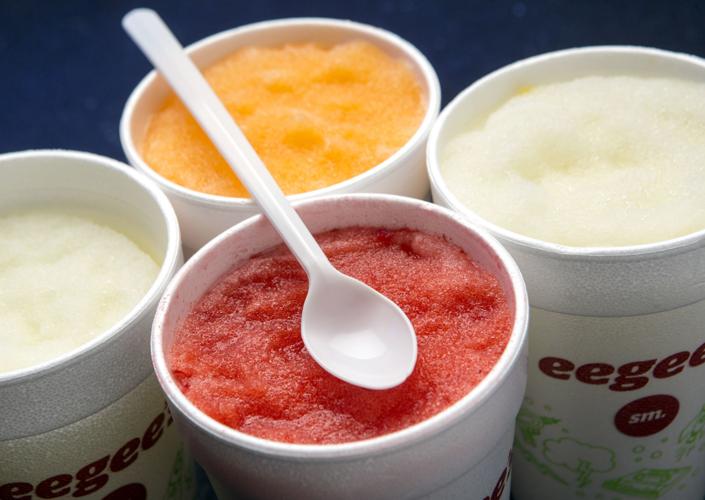When did Tucson decide it loved Eegee’s? Today, 50 years after its opening in 1971, the establishment is ubiquitous here. To love Eegee’s is to love the city. But it couldn’t have always been this way. What happened between the storied beginnings of the food truck selling iced lemonades and the institution as we know it, with a city full of devotees and 12 upcoming locations in Phoenix? I took to the Arizona Daily Star’s archives to witness the development of Eegee’s cult following.
While Eegee’s was perhaps first mentioned in print in 1972, the article does not yet report their origin story. The now-legendary tale is that in September 1971, two Rhode Islanders (and lifelong friends) Ed Irving and Bob Greenberg started a frozen lemonade truck.
People are also reading…
Irving had attended the University of Arizona and realized there was an untapped market for a few east coast specialties, including the Italian ice. Or, as Tucsonans know it, the Eegee.
The first Eegee’s was a truck, founded with $2,500 of investment capital (almost $17,000 in today’s dollars). Their first year, they sold just $20,000 worth of product, mostly to school-aged kids. In under a decade, they increased that yield to over $1 million.
“We were fortunate. We grew up with the town and we grew up with our customers,” Irving said in 1996.
“Tucson is a fast-food mecca,” the Arizona Daily Star wrote in 1977.
Six years after opening, Eegee’s was on track to make $1 million in one year. The article reporting their success, from the Arizona Daily Citizen, noted their rapport with school-aged kids as a huge driver of their early loyalties. Their success in that demographic proved so competitive that a high school principal complained that their truck competed too well with the vending machines that paid for band uniforms.
Nearly 40 years ago, Arizona Daily Star writer Robert Cauthorn declared a generational divide between the teens who ate (and often worked) at Eegee’s and the teens who grew up in the '50s and '60s, before Eegee’s was born, and instead frequented a drive-in called Johnnie’s.
The “singularly wholesome” setting of Eegee’s inspired allegiance, perhaps, because it was where a generation of boomers grew up and gained independence.
Eegee’s celebrated its 25th anniversary. The Arizona Daily Star wrote its first retrospective, which was full of tidbits:
Only two flavors ran once: Blue Hawaii, made with blue mint slush, chocolate chips and coconut shavings; and a slushy chocolate milk called Chocolate Sensation.
The “G” from “Eegee’s” comes not from co-founder Greenberg’s last name, but his high school nickname, “Grimes.” The “E” comes from Irving's first name, Ed.
City Council was once going to ban styrofoam cups, but Eegee’s intervened and convinced the City Council that styrofoam was environmentally friendly because it could be recycled into, for instance, furniture.

The first Eegee’s was a truck, founded with $2,500 of investment capital.
By the numbers
- 60,000: number of servings of Eegee’s catered to graduation parties in 1996
- 1: number of exclusive concessions deals Eegee’s made in Tucson, for the now-closed Justin’s Water World
- 200: number of gallons per hour made by the Eegee’s machine at their commissary in 1996
- 3: age of a toddler named Justin Trouard, whose first words were “mommy,” “daddy,” and “Eegee”
- $3,000,000: the conservative estimated loss encumbered by a failed expansion to Phoenix in the '80s
- $3,000,000: the amount donated by Eegee’s to local charities over their 50 years
- $423,243: the amount of money an employee embezzled from Eegee’s in the 2000s
- $7,500: reward for tips regarding an employee’s murder in the year 2000
- 1,000,000: number of gallons of Eegee’s sold annually
In a review for takeout, Arizona Daily Star writer Charlotte Lowe-Bailey rebrands the founders as Tucsonans, despite both Irving and Greenberg hailing from Rhode Island. Both the lede and headline of her article included the phrase “hometown boys.”
“We don’t see Eegee’s as a chain; it’s more like ‘hometown boys make good,’” she wrote in 2000.
In a survey of local elementary students, Eegee’s was cited as three kids’ favorite place to eat, with stiff competition from Peter Piper Pizza, Golden Corral, and “at home.” All of those kids are adults now — some of whom could have kids of their own, who might love Eegee’s just as much as their parents did.
Mascot Cap’n Eegee was retired by ad reps in 2002, while Irving was on a motorcycle trip to California and Enron was in the headlines.
The Arizona Daily Star profiled Super Dave, the Eegee’s hawker at University of Arizona football games. By his own accounting, Super Dave had sold over $300,000 worth of Eegee’s in his then-16 years at Eegee’s.
While Eegee’s often seems to be more than its products themselves, a byline-free editorial in 2006 describes the core of what an Eegee is: “tangy, lemon slushy drinks that are the prefect (sic) combination of solid ice and liquid — you need both a straw and a spoon.”
Yet, like a good raspado, what is crucial is that the liquid is light enough that when you drink it, the liquid doesn’t separate to become syrupy at the bottom of the cup, leaving flavorless ice in geological layers on top. Instead the drink remains one coherent whole, refreshing all the way down.
While the editorial was in response to the sale of Eegee’s to a family trust called CEO Foods, it scrapes at the theme of a changing guard in Tucson at the time: the closure of the Tack Room and Ye Olde Lantern restaurants marking a shifting tide in favor of “energetic owners and chefs.” Eegee’s is one “Tucson Thing worth retaining.”
Eegee’s ranch fries won Caliente’s Food Fight title as favorite fry in Tucson.
Eegee’s foam cups were named one of 100 objects that define Tucson.
Over three decades after their last attempt at expanding to Phoenix failed, Eegee’s is trying again. This time, they are led by CEO Ron Petty rather than the original founders.



